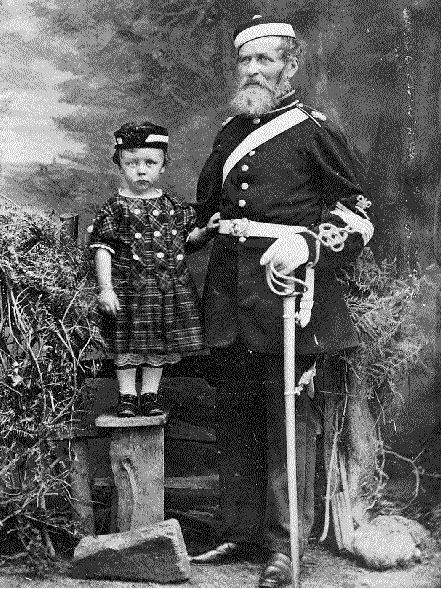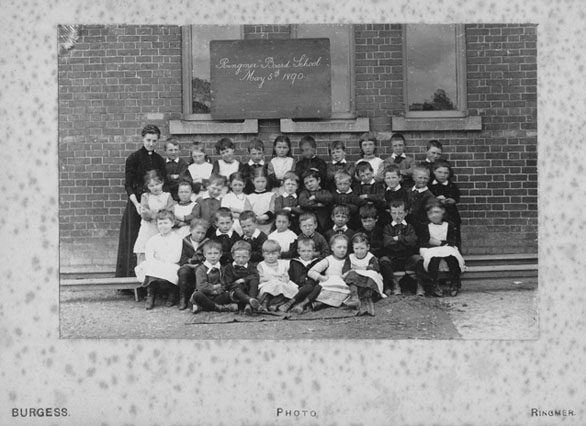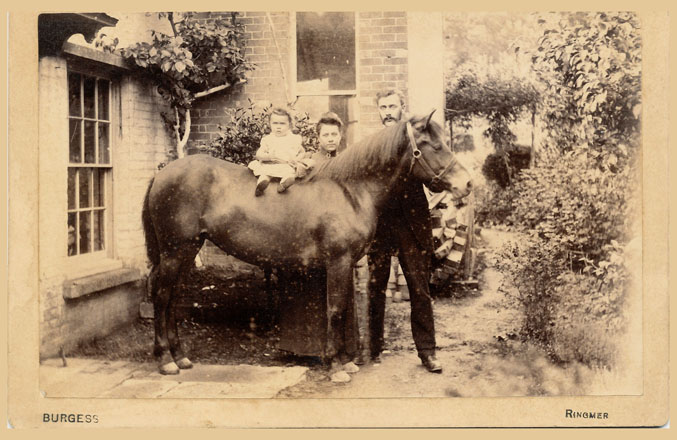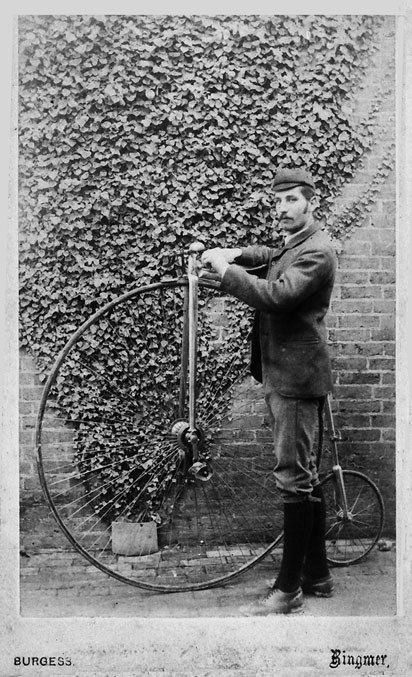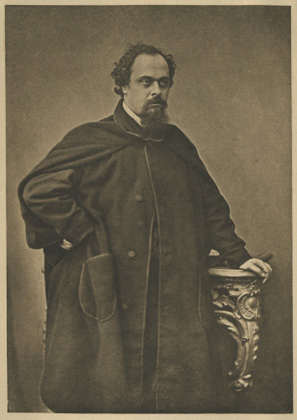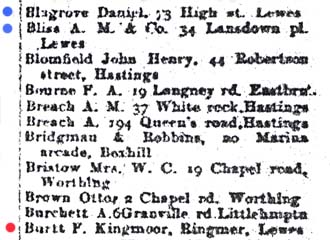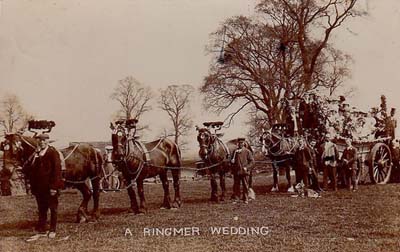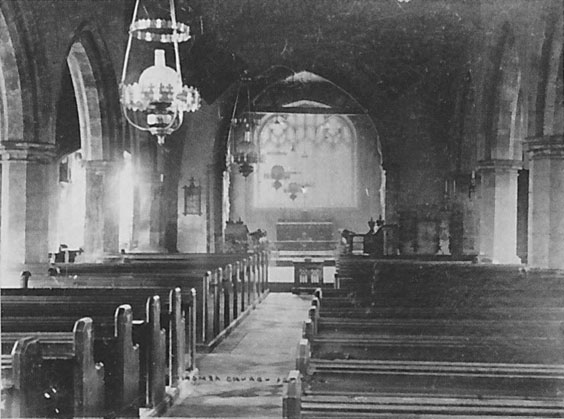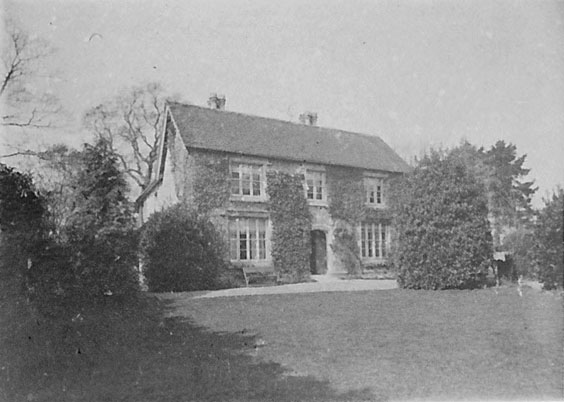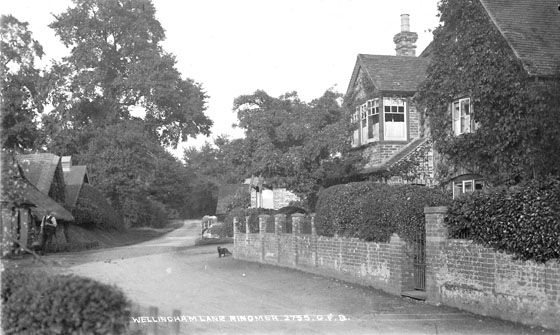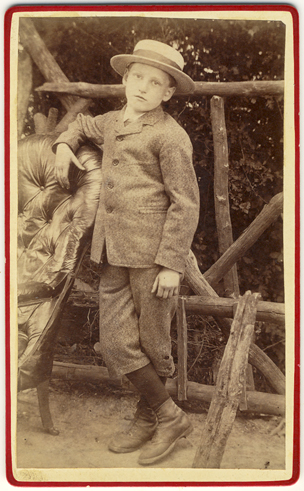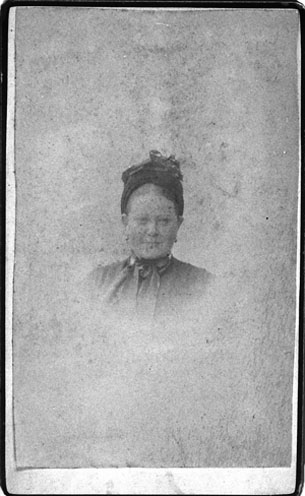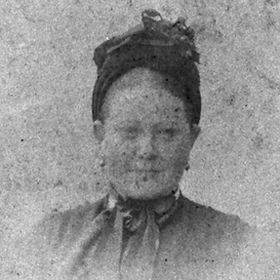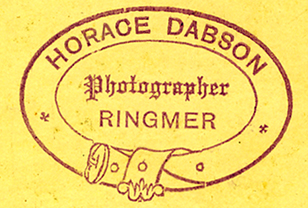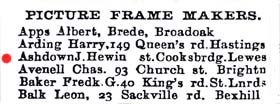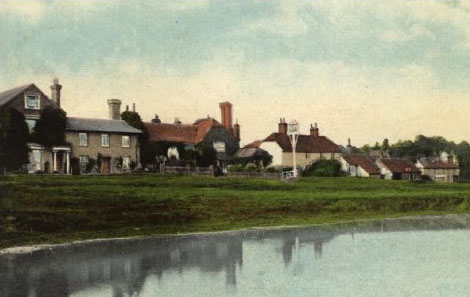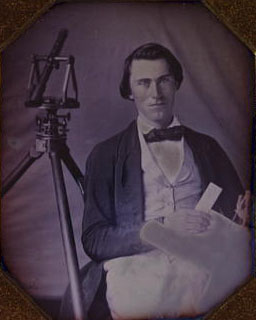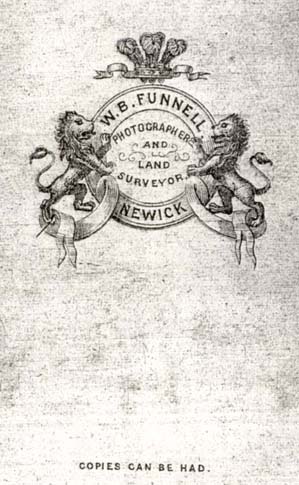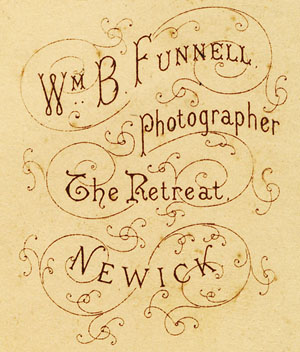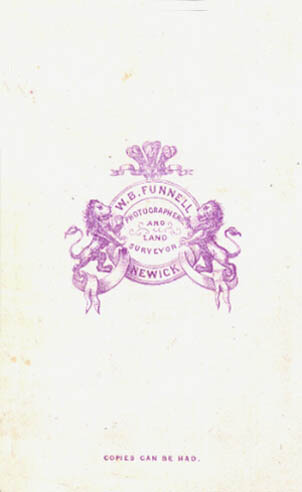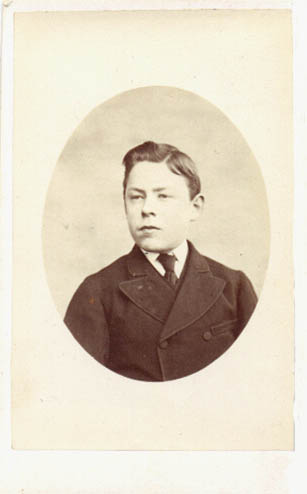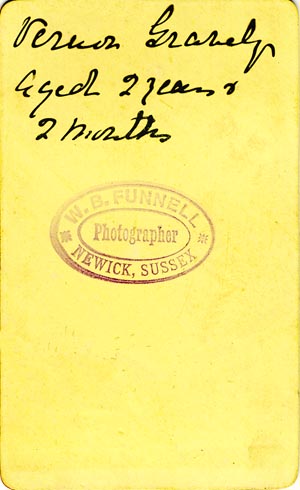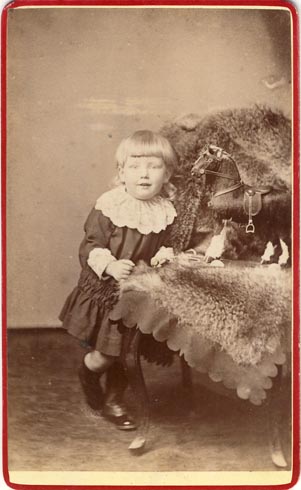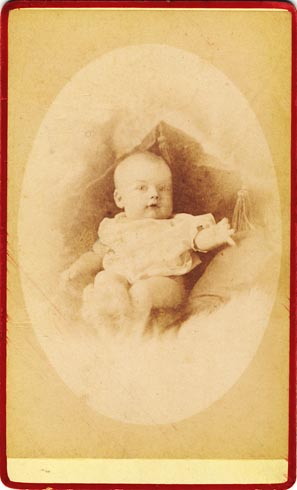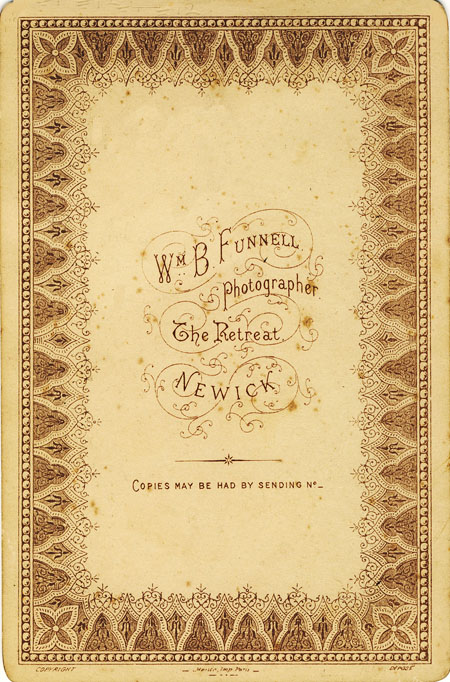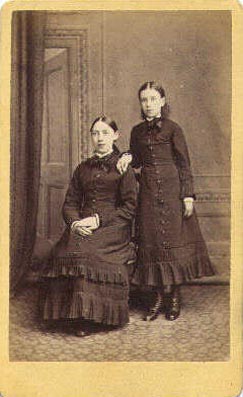Henry Burgess, who had been in business as a butcher in Brighton during the 1840s, was, by 1851 earning an income from owning houses. The 1851 census records Henry Burgess, a 45 year old "Proprietor of Houses" living with his first wife Elizabeth at 1 Hampton Terrace, Brighton. Also living at this address was Mr and Mrs Burgess's servant, 16 year old Eliza Ledbetter.* (Eliza's surname was variously given as Ledbetter, Lidbetter or Libbiter).
Mrs Elizabeth Burgess, Henry's first wife died in Brighton around 1864. A couple of years later in 1866, Henry Burgess, who was then aged around 60, married his former servant, 30 year old Eliza Ledbetter (born 1835,Burwash, Sussex). Frank Walter Burgess was probably Henry and Eliza's only child. When the census was taken on 3rd April 1881, Henry and Eliza Burgess and thirteen year old Frank were residing at The Villa, Ringmer. On the census return, Henry Burgess, Frank's father, is recorded as a "Retired Butcher", aged 75. Mrs Eliza Burgess, Henry's wife, was was thirty years his junior, informed the census enumerator that she was born in Burwash, Sussex, around 1835.
Mrs Eliza Burgess, Frank Burgess's mother, died in Ringmer during the 2nd Quarter of 1888, at the age of 53. When the 1891 census was taken, twenty-three year old Frank Burgess was residing at The Villa, Ringmer Green, with his widowed father, a young visitor, and one live-in servant. On the 1891 census return, Frank Walter Burgess gave his occupation as "Photographer".
|
1891 CENSUS: The Villa, Ringmer Green, Ringmer, Sussex |
|||||
|
NAME |
OCCUPATION |
AGE |
PLACE OF BIRTH |
||
| Henry BURGESS |
Head |
widower |
Retired Butcher |
85 |
Cuckfield, Sussex |
| Frank W. BURGESS | son |
single |
Photographer |
23 |
Ringmer, Sussex |
| William W. DUNSTON | visitor |
single |
Under Secretary |
16 |
Lewisham, Kent |
| George CLARK | servant |
single |
General Labourer |
25 |
Hailsham, Sussex |
[ABOVE] Frank Burgess recorded as a "Photographer" in the 1891 census.
On 15th August 1893, at Ringmer, Frank Walter Burgess married Mary Ann Paris, the daughter of Mary Pockney and the late Albert Edward Paris (1844-1873). Since the death of her husband in 1873, Mrs Mary Paris (born 1837, Ringmer), Mary's widowed mother, had been running a grocery and drapery business on The Green, Ringmer. Mary Ann Paris, Frank's bride, was born in Ringmer on 1st August 1871, and was Mrs Paris's youngest child.
The union of Frank Walter Burgess and Mary Ann Paris produced three children - Douglas Spencer Burgess (born 1895, Ringmer), Una Burgess (born 1896, Ringmer) and Beatrice Cicely Burgess (born 1898, Ringmer). The 1895 edition of Kelly's Directory of Sussex records Frank Walter Burgess at Ringmer Villa, Ringmer, yet by 1899, Kelly's directory lists the Burgess residence as St George's Villa, Ringmer. (John Kay has identified Frank Burgess's villa as the house now called 'Ashcroft', next to Ringmer Village Hall).
John Kay of the Ringmer History Study Group informs me that, as the son of a prosperous Brighton butcher, Frank Walter Burgess was a "gentleman of some means" and was not dependent on a professional career. John Kay reports that as young man Frank Walter Burgess derived some income as a music or dancing teacher and later as an "antiquarian bookseller". Frank Walter Burgess began dealing in rare books in the 1890s and is known to have had a particular interest in printed books and manuscript papers concerning art and poetry, purchasing works authored by William Blake, Percy Bysshe Shelley and John Ruskin. Frank Burgess was in regular correspondence with William Michael Rossetti (1829-1919), a literary and art critic and the younger brother of the Pre-Raphaelite artist and poet Dante Gabriel Rossetti (1828-1882). Frank Burgess purchased from William Michael Rossetti manuscripts written by D. G. Rossetti, drawings and verses by William Blake, and many other literary works. (There are around 60 extant letters from William Michael Rossetti to Frank Burgess and forty-eight of the letters written by Frank Burgess to William Michael Rossetti have also survived). In addition to buying and selling books, Frank Walter Burgess was also a noted bookbinder and book cover artist. In 1896, Frank Walter Burgess became a member of The Sussex Archaeological Society. Frank Burgess had earlier shared the contents of his great grandfather's diary, "The Journal of John Burgess" with The Sussex Archaeological Society.
Frank Walter Burgess died in Ringmer on 11th July 1899 at the age of 31 following a bout of rheumatic fever. After the death of Frank Burgess, William Michael Rossetti corresponded with his widow, Mrs Mary Ann Burgess. The seven surviving letters written by William Rossetti to Mrs Burgess suggests that she continued her late husband's dealings in books and manuscripts for a period of time. By 1911, Mary Ann Burgess was running a boarding house at 25 St Anne's Crescent, Lewes, where she resided with her three children. Mrs Mary Ann Burgess, the widow of Frank Walter Burgess, died in Ringmer on 2nd November 1955.
|
|
| [ABOVE] Frank Walter Burgess as a very young boy, photographed with his father Henry Burgess (c1806-1901) in a studio portrait dating from around 1871. Henry Burgess had married his second wife, 30 year old Eliza Ledbetter, when he was close to 60 years of age. In this studio portrait, Henry Burgess, then in his mid sixties, is dressed in the uniform of the Sussex Volunteers, in which he served for many years. |
|
[PHOTO: Courtesy of John Kay & Ringmer History Study Group] |
|
|
| [ABOVE] Frank Walter Burgess (1867-1899) photographed on his wedding day in August 1893. Frank Burgess began taking photographs as a young man and by 1888 he was exhibiting his photographic work in Ringmer. |
| [PHOTO: Courtesy of John Kay and the Ringmer History Study Group] |
